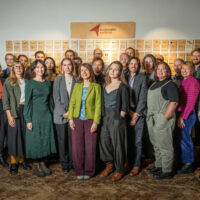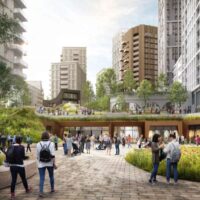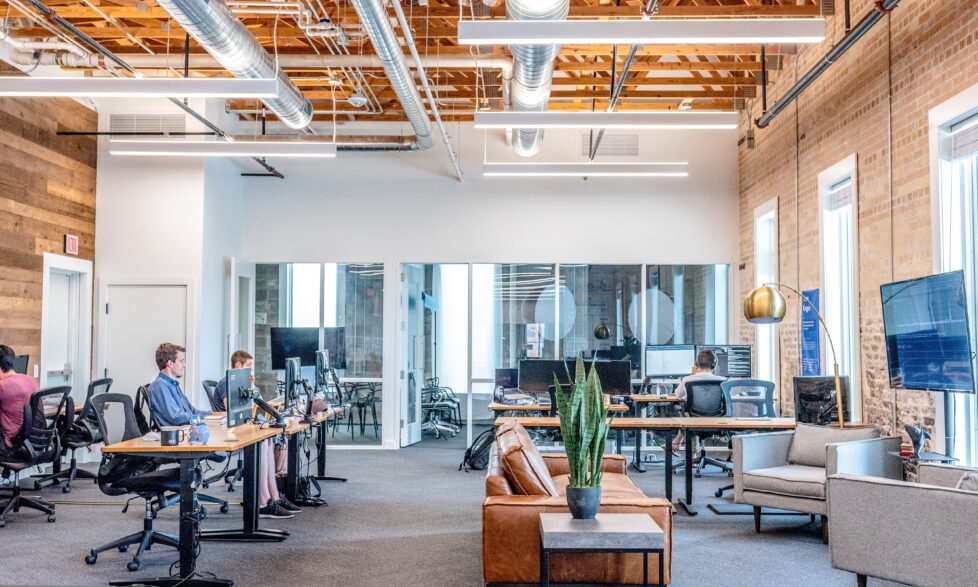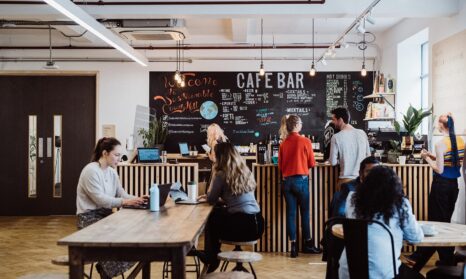Unlocking sustainability through the future of work
For most office-based organisations, ways of working have shifted significantly since the start of the pandemic. Homeworking, already on the rise before 2020, has remained at higher levels for businesses embracing a hybrid model.
As a sustainability consultant within the built environment, part of my role is to explore how we can harness the sustainability benefits of the shift to hybrid and homeworking practices to support happier, healthier employees and thriving local economies.

Homeworking is here to stay
As the Summix future of work report details, working from home is on the rise – an additional 5.3 million people now work from home post-pandemic.
This has been aided by the growth in the UK’s creative and knowledge-based industries, which now totals seven million workers, along with the ongoing ‘professionalisation’ of the UK workforce – higher-skilled jobs – which has grown from around 38% of the workforce in 2006, to 45% in 2023.
Back in January 2022, 31% of all UK workers worked ‘predominantly’ from home while the UK emerged from covid restrictions, and in January-February 2023, 39-40% of people had worked from home during the previous seven days.
The Guardian recently reported that UK offices have typically been about a third full in 2023. It's clear that for most desk-based organisations, a form of remote working is here to stay.
I recently presented at the Oxfordshire-Buckinghamshire Future of Work Symposium, and using three principles from Bioregional’s One Planet Living® framework, outlined a range of areas for developers and local authorities to consider when creating sustainable communities that are prepared for the future of work.
It's clear that for most desk-based organisations, a form of remote working is here to stay.
Wellbeing and quality of life
In a 2022 ONS survey, 78% of those working from home in some capacity reported improved work-life balance. Increased homeworking or local coworking can save commuting time and create additional space for family, hobbies and fitness, while also reducing commute-induced stress.
Flexibility for homeworking can also open recruitment up to a larger pool of candidates and enable a more diverse workforce, as well as supporting working parents with childcare arrangements.
However, homeworking isn’t without potential impacts on mental health - homeworkers experience greater feelings of isolation due to lack of social contact, and without the separation between home and work, it’s proven that homeworkers end up racking-up more overtime.

Personal and local economies
Remote work comes with financial benefits from avoiding costly commutes, and makes it far easier to prepare healthier, cheaper home-made meals, rather than grabbing a meal deal on the go. 46% of homeworkers have reported spending less as a result of homeworking (ONS, 2022).
There are also benefits of increased use of amenities in residential areas, such as shops, cafés and gyms, which boosts local economies and supports independent businesses - butchers, bakers and greengrocers saw a 63% increase in spending in 2021.
Coworking spaces in residential areas can cater to small businesses and remote workers. This adds to the commercial offering of new developments and can revive unused spaces on existing high streets and industrial estates.
However, on the flip side, 86% of homeworkers reported increased spend on utilities, and this was before the significant energy price increases that will hit people hardest in the year to come. Coworking can help to overcome this but also carries its own costs.
Emissions from energy and transport
Embracing hybrid work creates potential carbon savings by reducing commuting and business travel, which can lead to cleaner air and lower levels of localised pollution. Companies can downsize offices or transition to coworking/serviced facilities, cutting energy consumption and emissions, as well as making financial savings.
However, without a holistic, joined-up approach from transport providers and local authorities, the reduced utilisation rate of transport could increase the emissions per passenger. And if homeworkers choose to live further away, they will increase their journey time and emissions when they do travel. Emissions may increase as offices and homes operate to enable hybrid working, and the duplication of devices can increase the material footprint of hybrid working.
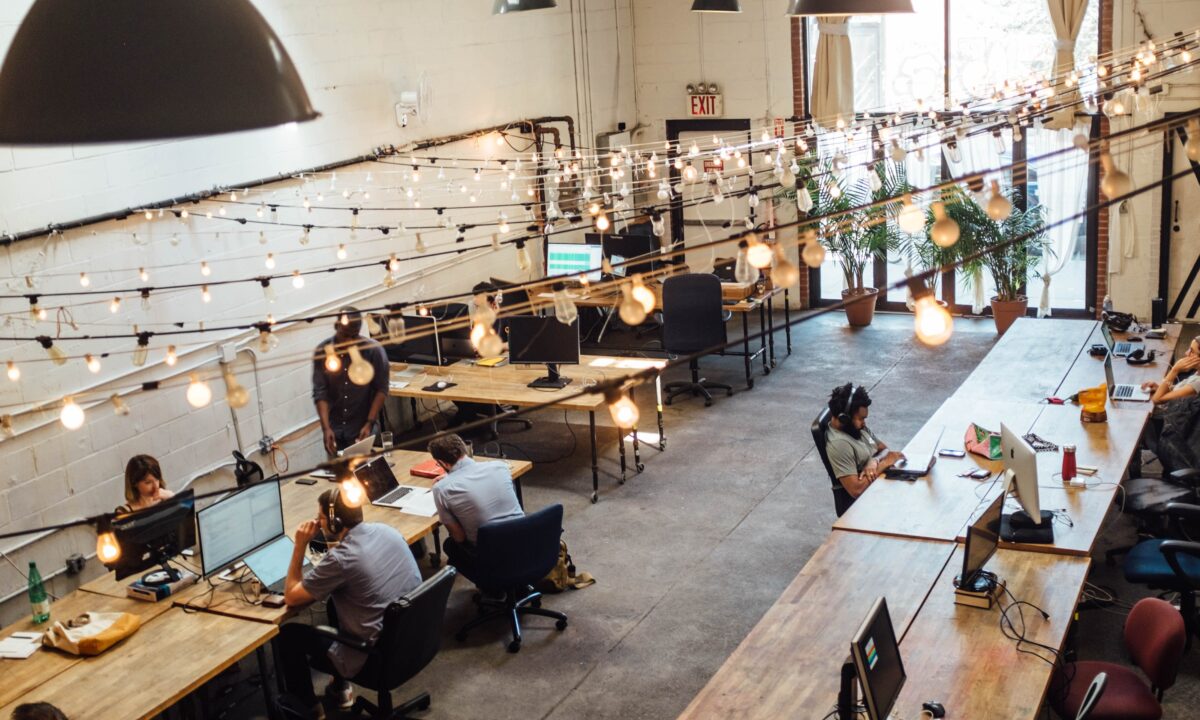
[Coworking facilities] support the development of a localised community and economy, enable shorter commutes and lower transport emissions, boost social interaction and feelings of belonging, provide networking opportunities, and allow companies to downsize their infrastructure while maintaining a physical presence.
Local coworking spaces - a must for any new development
Flexible coworking spaces can provide the answers to many of the issues raised above. Many employers want their teams back in the office – in one form or another – for several reasons. Unused or under-utilised office space is expensive, and in-person collaboration and creativity are hard to match through a screen. Coworking can offer the best of both worlds – the flexibility of homeworking and the collaborative, social nature of office working.
Traditional office blocks can be repurposed for coworking spaces or retrofitted for housing or extra care facilities. The City of London is planning to create 1,500 new homes from empty offices by 2030.
New residential developments should include coworking facilities as part of a diverse commercial offer. They support the development of a localised community and economy, enable shorter commutes and lower transport emissions, boost social interaction and feelings of belonging, provide networking opportunities, and allow companies to downsize their infrastructure while maintaining a physical presence.
This is exactly what Bioregional did last summer, when it moved away from what had become an under-used, 40-person space at BedZED, and took up 12 desks at Sustainable Ventures, County Hall.
Our 30 staff average between two-three days a week each in the office, booking a desk flexibly, and once a month we have an all-staff day for in-person meetings and collaboration.
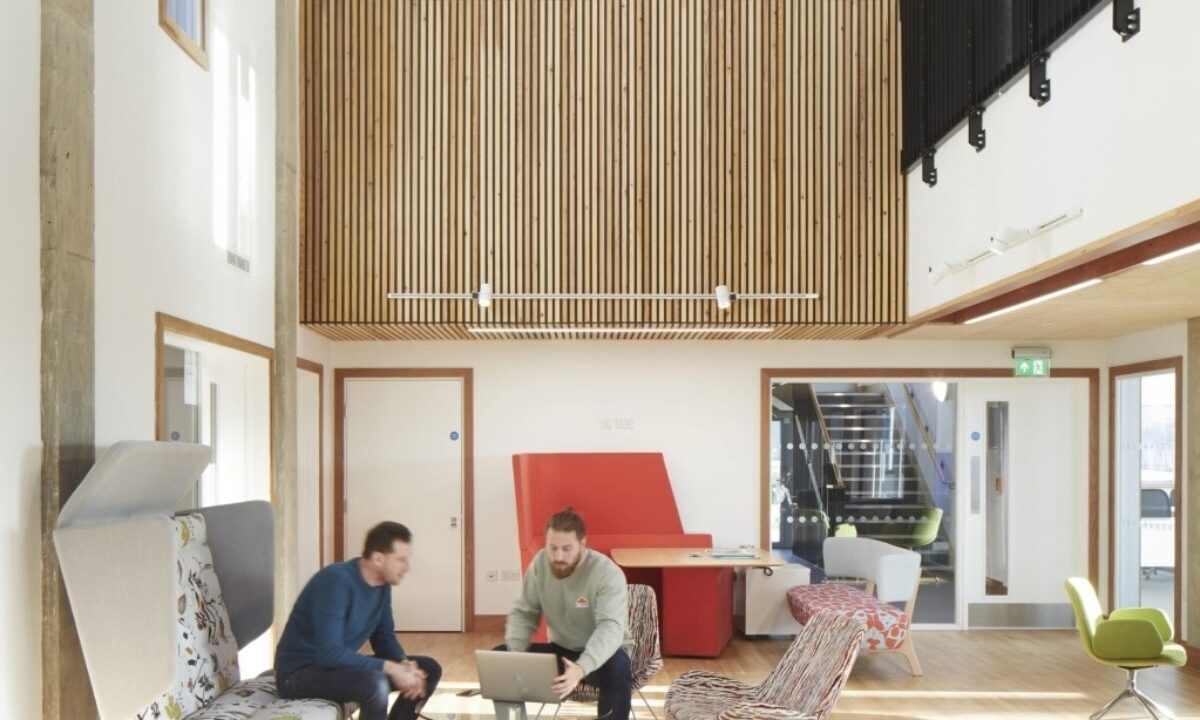
Communities designed for an outdated, centralised model will ultimately fail - developers and local authorities must use this moment to be bold and embrace a new model.
How should planning authorities respond?
Local planning authorities and housing developers must create a built environment that more closely aligns with these new working patterns, in order to enable the sustainability benefits to be more widely realised.
This could include:
- Developing more flexible working and community spaces that can be utilised day and night
- Coworking spaces in all new developments, including village hubs, and incubator/innovation spaces
- Joined-up transport initiatives, including public transport such as e-buses, along with micro-mobility options – e.g. folding bike / e-bike rentals to complete the first/last mile
- Developers need to make new homes office friendly as well as providing local flexible space
- Redundant space must be sustainably repurposed or retrofitted – this could include affordable homes, coworking spaces, homeless shelters, lab space or elderly care – essentially any form that meets the needs of the local community
Looking to the future, developers can take note of recent sustainable examples that have achieved great success. The Eco Business Centre, Bicester is not only a great coworking space, but it’s a net-zero building and the first non-residential Passivhaus Plus building in the UK.
The Bee House at Milton Park in Oxfordshire is the county’s newest and largest coworking space and was developed from an existing office – reusing and retrofitting the structure and materials.
Its café is open to everyone, facilitating networking and collaboration, and offers a shuttle bus from Didcot Parkway, along with EV charging points, helping to reduce transport emissions.
The building meets the growing demand for agile workspace in Oxfordshire from spinouts and start-ups, people using the ‘hub and spoke’ model to work locally and travel into city offices less frequently, and companies which require grow-on space.
These examples show a route to meeting the new needs of workers, employers, local economies, and the environment.
Workers and employers have realised they don’t need to return to exactly how things were done before, and new approaches can bring significant benefits for health, the environment and the economy.
Communities designed for an outdated, centralised model will ultimately fail - developers and local authorities must use this moment to be bold and embrace a new model.
Originally published on the Summix blog.
Image credits: Ausin Distel via Unsplash, Szepy via Getty Images Pro, Shridhar Gupta via Unsplash, Architype

